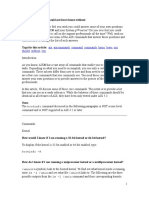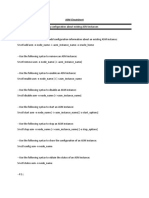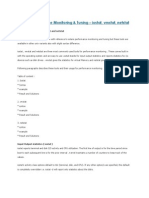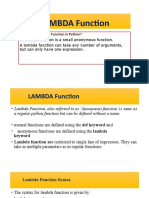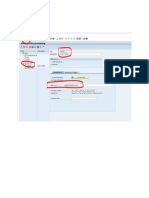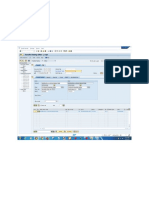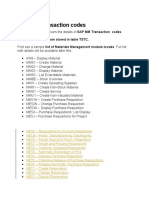The following AIX commands provide
paging status and statistics:
vmstat -s
________________________________________
To display the number of asynchronous Input-Output servers running, enter
the following commands as the root user:
pstat -a | grep -c aios
ps -k | grep aioserver
____________________________________________
Show Server Log in AIX
errpt -a|more
___________________________________________
you can use this command to find the location of the alert log:
select
name
from
v$parameter
where
name = 'background_dump_destination';
__________________________________________
Start SQL*Plus without connecting to the database:
sqlplus /nolog
Connect to Oracle Database as SYSDBA:
CONNECT username AS SYSDBA
___________________________________________
Starting an Instance Without Mounting a Database
STARTUP NOMOUNT
�Starting an Instance and Mounting a Database
STARTUP MOUNT
_________________________________________________
The following command starts
an instance (and mounts and opens the database)
in restricted mode:
STARTUP RESTRICT
Later, use the ALTER SYSTEM statement to disable the RESTRICTED SESSION feature:
ALTER SYSTEM DISABLE RESTRICTED SESSION;
______________________________________________
Displays the system name. For example, AIX.
uname -s
Displays the name of the node.
uname -n
____________________________________________
To display the number of processors
on your system:
lscfg | grep proc
To display the number of hard
disks on your system
lspv
____________________________________________
How do I list information about a specific physical volume?
lspv hdisk1
How do I get a detailed configuration of my system?
lscfg
_______________________________________________________
�uname -a Displays the system name, nodename, version, machine ID.
uname -M Displays the system model name. For example, IBM, 9114-275.
uname -v Displays the operating system version.
uname -m Displays the machine ID number of the hardware running the system.
name -u Displays the system ID number.
______________________________________________________________
se can user svmon command to monitor memory usage as follows;
svmon -P -v -t 10 | more
svmon -U -v -t 10 | more
topas
topas -p
________________________________________________
To check for software problems:
lppchk -v
lppchk -c
lppchk -l
______________________________________________
will give u this output which give u
the information regarding
ur memory.
svmon
_______________________________________________
http://stromberg.dnsalias.org/~strombrg/Useful-AIX-commands.html
____________________________________________________
CPU Monitoring
vmstat, iostat, topas, sar, time/timex
Memory Monitoring
vmstat, topas, ps, lsps, ipcs
�I/O Subsystem
vmstat, topas, iostat, lvmstat, lsps, lsatt/lsdev, lspv/lsvg/lslv
Network
netstat, topas, atmstat, entstat, tokstat, fddistat, nfsstat, ifconfig
Processes & Threads
ps, pstat, topas
__________________________________________
In depth tools
CPU Monitoring
netpmon
Memory Monitoring
svmon, netpmon, and filemon
I/O Subsystem
filemon, fileplace
Network
netpmon, tcpdump
Processes & Threads
svmon, truss,kdb, dbx, gprof, fuser, prof
CHPH010126 --- S002 YES
S001 NOT VISIBLE
To check account lock status of all users:
lsuser -a account_locked ALL
To remove user ravi:
rmuser ravi
dpmon pf=SMN_DVEBMGS00_chl-inhsmn01
�https://www.tech-recipes.com/rx/569/some-common-aixunix-commands/
http://stromberg.dnsalias.org/~strombrg/Useful-AIX-commands.html
https://blog.yannickjaquier.com/aix/aix-basic-commands.html
�________________






















